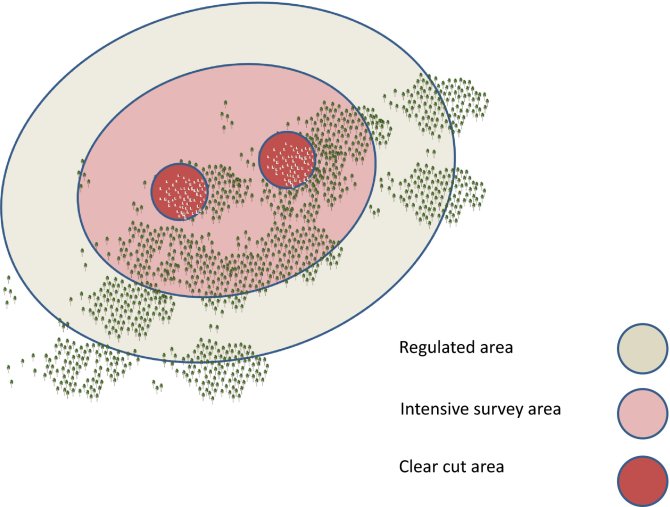
Project
Management of outbreaks of plant pests in the European Union
Plant pests can cause severe damage and have big impact on ecosystems services. The aim of this thesis is to analyze the outbreak management strategies for invasive plant pests. First, we will analyze how outbreak management is done in practice. Second, we will use individual-based modelling and economic analysis to compare different management strategies. Third, we will analyze whether natural dispersal is a good predictor for spread. Finally, we will test whether including additional predictors on population growth and human-assisted dispersal improves the predictions of spread.
Background
Plant pests affect plant health in agriculture and the environment. Outbreaks of newly introduced exotic pests may be particularly damaging and some of those need to be controlled to stop its further expansion. To eradicate new incursions or contain established pest populations that cannot be eradicated, plant health agencies delimit zones with different measures around an outbreak area. The width of the zones and the measures in them should take into account the natural dispersal distance of the organism, human-assisted dispersal pathways, and the population growth of the pest. Actors in the plant health domain often rely on natural dispersal distance of the species or its vector to define the width of management zones. However, if this leads to effective delineation of different zones has not been thoroughly analyzed. There is a great need for more information on how differences in population growth, natural dispersal, and human-assisted dispersal affect the effective zoning strategy to manage an outbreak.
Project description
The project is divided into four smaller parts.
Topic 1: how is management of plant pest outbreaks done in practice in the European Union?
We collected and analysed information on the zoning strategies of 121 outbreaks of 25 plant pests in the EU from the EPPO Global Database to synthesize the current practice on outbreak management of plant pests.
Topic 2: which strategy is most cost-effective: clear-cut strategy or tree by tree selective cutting combined with intensive surveillance?
Our goal is to compare cost-effectiveness of two strategies: 1. Clear cut strategy: when a new infestation is found, all trees are cut in a given area; 2. Tree by tree selective cutting, combined with strengthening surveillance. Individual dispersal model will be combined with sub model for surveillance and detection, sub-model for assessing the costs, and for host density in order to have a comprehensive modelling tool.
Topic 3: what is the relationship between natural dispersal distance and spread rate of invasive plant pests?
We will do a meta-analysis on the relationship between natural dispersal distance and spread rate for insect plant pests. Statistical models will be used to identify the relationship between natural dispersal distance and spread rate across species or higher level taxonomic groups.
Topic 4: to what extent can we predict spread of invasive plant pests based on population growth, natural dispersal and human-assisted dispersal?
In order to study whether additional predictors of population growth and human-assisted dispersal could improve the predictions of spread, an integrodifference spread model will be built that allows integrating a population growth model, a natural dispersal kernel and a human-assisted dispersal model.
